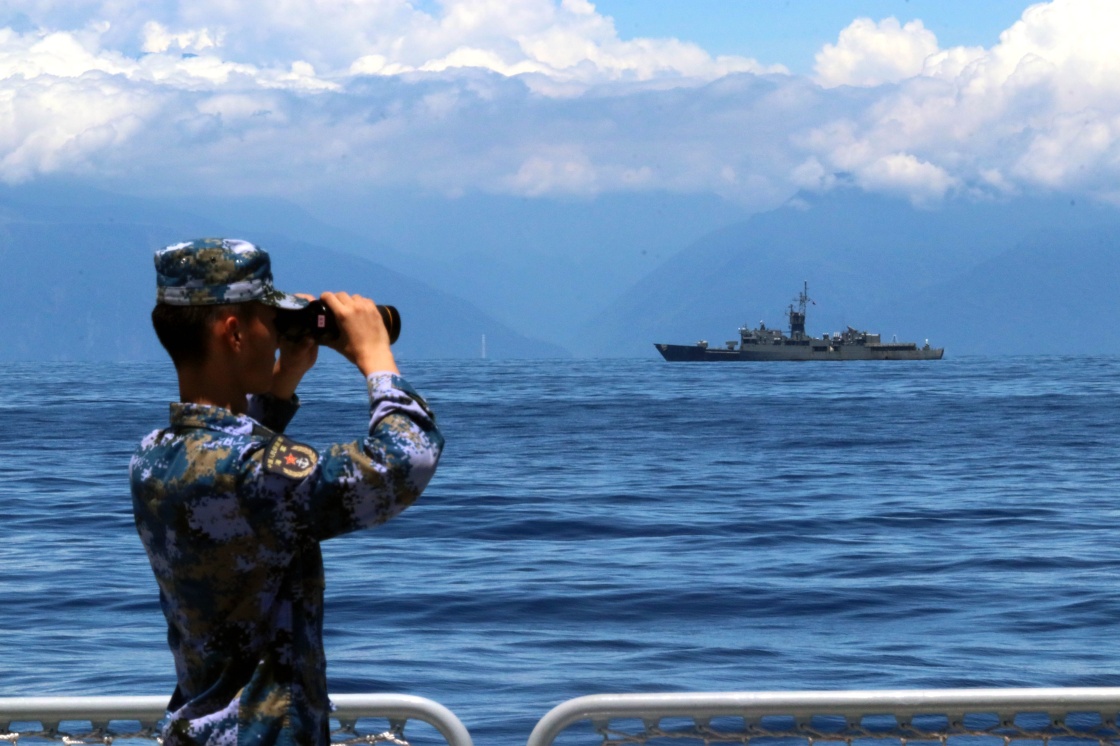
On Nov. 15, Chinese President Xi Jinping and U.S. President Joe Biden met in San Francisco, pressing the pause button in tense China-U.S. relations. Will the two countries be able to prevent the Taiwan question from becoming the next flashpoint as an uneasy world looks on? It is the most important and sensitive issue between them, even with the ongoing hostilities in Ukraine and the Middle East.
Two years ago, a cover story in The Economist featured a radar map of Taiwan and described the region as “the most dangerous place on Earth.” Is the place any safer now?
Various outlooks
The Shanghai Communique of 1972 already contained Chinese and American statements on the Taiwan question. Now, more than 50 years later, the two countries continue to follow different but carefully crafted lines. Their view are admittedly not without overlap. As in the Shanghai Communique, both countries agree that Taiwan is a part of China. However, with regard to how the Taiwan question should be resolved, China emphasizes that “it is China’s internal affair which brooks no foreign interference,” while the U.S. stance is to “reaffirm its interests in a peaceful settlement of the Taiwan question by the Chinese themselves.”
The Chinese new release after the Xi-Biden summit in San Francisco urged the U.S. side to take concrete actions to honor its commitment against support for an independent Taiwan, to stop arming Taiwan and to support peaceful reunification. The American news release, on the other hand, reiterated that the U.S. had not changed its one-China policy, that it opposes any unilateral change of the status quo and that it expects both sides of the Taiwan Strait to resolve their differences peacefully.
To change or not to change
The Taiwan question remains unresolved, and China has yet to reunify, which is more or less attributable to the overt and covert support of Taiwan by the United Statets. Whenever China-U.S. relations are tense, pro-independence forces in Taiwan take the opportunity to make trouble. Article 8 of China’s Anti-Secession Law states that in the event secessionists in Taiwan should, “under any name or by any means cause the island’s separation from China" or “major incidents entailing Taiwan’s secession from China should occur, or that possibilities of peaceful reunification should be completely exhausted, the state shall employ non-peaceful means and other necessary measures to protect China’s sovereignty and territorial integrity.”
Accordingly, when there is a higher likelihood that China might “employ non-peaceful means and other necessary measures,” Taiwan naturally becomes a more dangerous place in the eyes of the world.
On the other hand, when China-U.S. relations relax or are stable, and when the U.S. effectively opposes Taiwan independence, secessionist forces on the island restrain themselves, and the two sides of the strait naturally spend more time on peace and development.
China and the U.S. have their respective policies on the Taiwan question, and both emphasize that these have not changed. However, internal politics and diplomatic considerations have driven changes in their wording and catchphrases. For example, the U.S. declares both an opposition to unilateral change to the status quo and an expectation of a peaceful resolution of any cross-strait differences. China hopes very much to resolve cross-strait differences by peaceful means.
The problem is that the Taiwan authorities are bent on the pursuit of independence, and they rely on the U.S. in total disregard of the mainland’s consultation and negotiation proposals. That is why China’s post-summit press release stressed that America’s commitment to non-support of Taiwan independence should be honored not with words but with concrete actions fostering peaceful reunification. These are new statements from the summit.
During both the Bali meeting in November 2022 and the recent San Francisco meeting, President Xi talked emphatically about the five-point commitment of the U.S. — that is, that the U.S. does not seek a new cold war with China; it does not aim to change China’s system; the revitalization of U.S. alliances is not targeted at China; it does not support Taiwan independence; and it has no intention to generate conflict with China. Regrettably, the White House news releases for the two summits didn’t even mention not supporting Taiwan independence. They contain only the statement that America’s one-China policy has not changed. The notion that the U.S. does not support Taiwan independence only appears in the fact sheet on U.S. relations with Taiwan on the U.S. State Department website.
Widening understanding
The two heads of state agreed at the San Francisco summit on a series of practical, cooperative moves, and the two military forces resumed high-level communication. These things could serve as guardrails to effectively control competition and prevent conflicts. On the Taiwan question, to ensure peace and stability, the Chinese government proposes peaceful, integrated development, with prosperity shared by both sides. The U.S. also talks about peace and stability as being in the interest of the world. One should think that it ought to join hands with the Chinese government for cross-strait integration and development and against provocations by the Taiwan secessionists.
In recent years, the U.S. has used the Russia-Ukraine conflict as an excuse to increase arms sales to Taiwan. With its idea of “asymmetric defense” and its “porcupine strategy,” the world’s superpower is turning the island into an Asian powder keg. This runs counter to what the U.S. says about peace and stability.
Differences do exist, and common understandings need to be found through constant communication. Differences between China and the U.S. are not limited to the Taiwan question; however, the Taiwan question is the most complicated and sensitive, with the potential to affect the overall picture.
With the start of election season in Taiwan and the U.S., the Taiwan question is again gaining a high profile. No matter which political party in Taiwan comes to power, China’s red line remains “no secession.” It should also be the action guide for the U.S. to “ensure peace and stability in the Taiwan Strait.”
